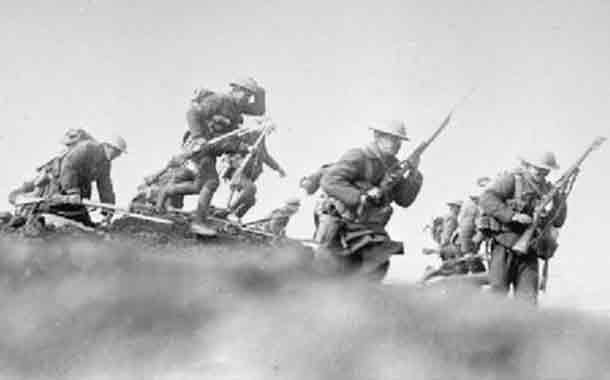<![CDATA[On the morning of the 16th October 1916, Private Henry Farr of the British Expeditionary Force was executed in France for cowardice. It has since been argued that Farr suffered from 'shell shock', a severe psychological and physical disorder caused by the stresses of modern day warfare. His death led to a long and exhausting campaign by his descendents to win a pardon for him, and others who were executed for cowardice in the First World War. Farr was a member of the First Battalion West Yorkshire Regiment, which was involved in the infamous battle of the Somme. On the morning of the 17th September Farr asked to be relieved from duty as the regiment advanced towards the frontlines of the battle. He was sent to see the medical officer, who either refused to see him because he had no obvious physical injury, or saw him but found nothing wrong. The reports of Farr's court martial are unclear on exactly what happened when he saw the physician. Despite the doctor's conclusions, Farr remained away from the frontlines that evening. He was ordered by his superior officer, Regimental Sergeant Major Hanking to report to the trenches, which Farr refused to do, saying he 'could not stand it.' At 11:00pm an attempt was made to forcefully escort Farr to the frontline, he again resisted, a scuffle started and he attempted to run away. The following morning he was arrested and charged for contravening Section Four of the Army Act; 'showing cowardice in the face of the enemy.' His court martial started around two weeks after his charge, and was over in an hour. Four soldiers described the series of events of the 17th September, which Farr did not deny. The medical officer Farr had reported to had been severely wounded, meaning he was unable to give any evidence. Farr had absented himself from duty several times before, and was aware of the consequences of doing so. The situation at the Somme was undeniably '...in the face of the enemy', and so there was no choice but to give Farr a death sentence. Farr was incredibly unlucky in that his death sentence was one of the few to actually be performed. Of 3080 death sentences issued to British soldiers on the Western Front, only 346 were actually carried out. In terms of charges of cowardice, only 18 of the 551 guilty verdicts actually resulted in an execution. All death sentences had to be confirmed by Field Marshal Haig. Farr was unfortunate in that he fell into the 10% of death sentences that Haig agreed to. It is of course impossible to know why Haig signed off this sentence. One explanation though, is that he was concerned about morale in his increasingly civilian dominated army, as they faced a seemingly hopeless situation against the German forces in 1916. Farr may have been killed just as much for 'when' as 'what' he did. Farr was most likely a victim of shell shock, a severe disorder caused by prolonged exposure to artillery fire. It seems his breakdown was triggered by having to march by British guns on the 16th September, as they launched a heavy bombardment of the German forces. The term shell shock was first used by a medical officer called Charles Myers in 1917. The symptoms included severe anxiety, incoherence, trembling, loss of vision and diarrhoea. It seems that doctors had begun to detect this illness from the start of the war, but failed to completely understand its causes and effects. Some medics started to argue that the only cure was a complete removal from the front line and an extended period of rest. Unfortunately, the demands of war meant the officers of the British Army had little time to listen to these concerns. It is believed that by the war's end, 80,000 soldiers in the British Army had suffered from the affliction. In August 2006, the British government finally agreed to the campaigns of Farr's family to grant him a pardon. The government then sought Parliamentary approval to pardon all of the British and Commonwealth soldiers executed during the First World War for cowardice. ]]>
Private Henry Farr
